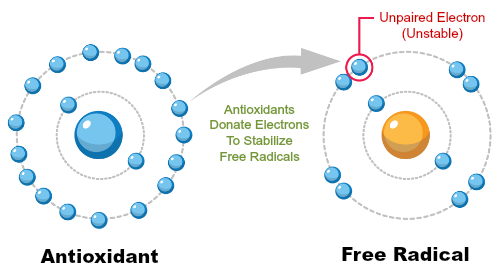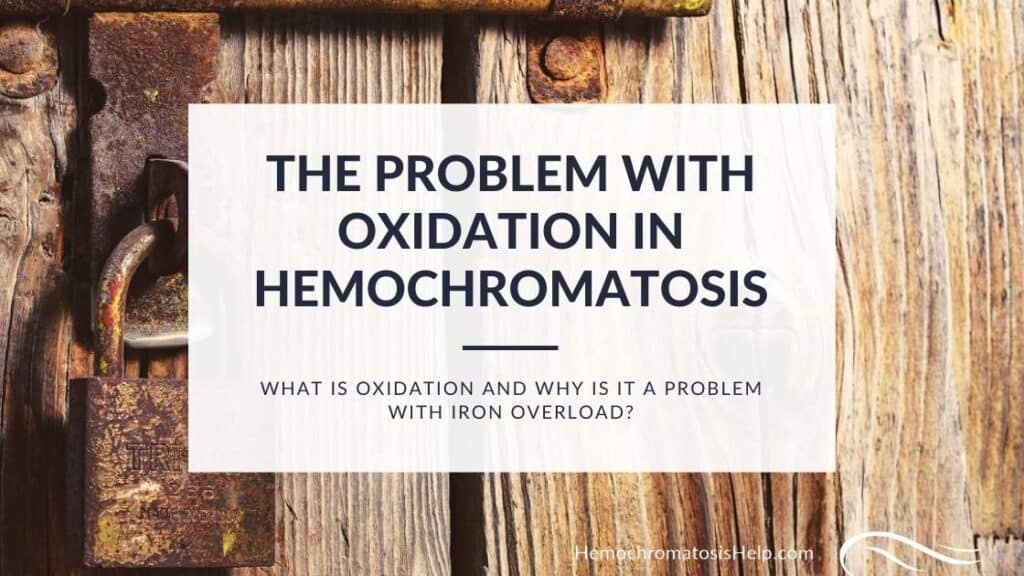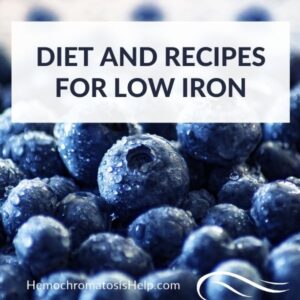Oxidation is a fundamental problem of iron overload and is a major reason why individuals with hemochromatosis develop worsening health concerns over time.
 As a person stores more and more iron in their body, one progressive consequence of iron overload is a chronic state known as “oxidative stress.”
As a person stores more and more iron in their body, one progressive consequence of iron overload is a chronic state known as “oxidative stress.”
In this state, excess iron creates oxidation that can stress both the structure and function of our bodies’ cells.
The most vulnerable tissues in the body to oxidative stress include the liver, heart, pancreas, hormonal glands, and joints. Not surprisingly, these cells are among the most frequently damaged by hemochromatosis.
If hemochromatosis has yet to be diagnosed, or if it has been left untreated or under-treated, a person’s oxidative stress progressively gets worse.
Oxidative damage can become bad enough to be irreversible, so it is critical to identify and treat the problem as soon as possible.
When our bodies have too much iron, our natural antioxidant systems in our bodies can’t quite keep up with their jobs, and the long-term result is damage to our DNA and cells.
Understanding Oxidation
Oxidation is a difficult concept to understand, I will admit, so please allow me to walk you through this idea.
We hear the term “antioxidant” all the time in relation to our health. Generally speaking, most people agree we need to get antioxidant support either through our diet or supplementation. But what does this really mean, and why is it so important?
Simply stated, oxidation is when oxygen combines with an element, changing the appearance of the element.
Everyday examples of this process include browning apples, bananas, or avocados once they are opened up and exposed to air. You can see the physical properties of these fruits change right before your eyes.

To get a little more technical, oxidation is defined as any chemical reaction in which a material gives up electrons, as when the material combines with oxygen.
Oxidation can be rapid, as when we burn a piece of wood for a fire, or it can be slow, as seen in the rusting of an old car or fence post.
While the human body is a bit different than, say, a penny that has become green over time, our bodies are subjected to physical change and deterioration from oxidation.
In particular, excess iron causes a great deal of oxidation, right down to the level of our body’s cells.
Over time, this oxidative stress can contribute to many problems and may explain the symptoms of hemochromatosis, including:
- Low energy and fatigue
- Inflammation and infection
- Insulin resistance and diabetes
- Arthritis and joint pain
- Organ damage: liver, heart, kidneys, brain
Antioxidants
Antioxidants are important to combat this problem of oxidation.
Fortunately, clinical research has demonstrated the value and health benefits of specific antioxidants for hemochromatosis!

Key antioxidant nutrients that are beneficial for neutralizing free radicals in iron overload include:
- Turmeric
- Green Tea
- Vitamin E
- Milk Thistle
- Quercetin
- Resveratrol
- Selenium
- Alpha Lipoic Acid
- N-Acetyl Cysteine
Incorporating these nutrients and supplements into your routine can go a long way toward helping address oxidative damage and support your health.




